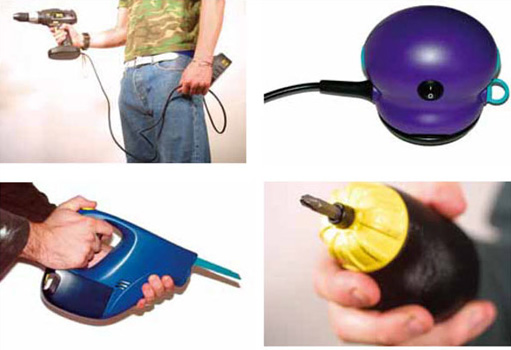6 Inclusive design
This section reveals the importance of designing things to suit all potential users.
Inclusive design (or universal design) means designing products so that they can be used easily by as many people as wish to do so. This may sound an obvious goal, but the fact is that many people – some estimates suggest as many as one-fifth of all adults – have difficulty carrying out ordinary tasks with everyday products.
Many elderly and disabled people cannot carry out – certainly with any ease or dignity – the range of everyday tasks that others take for granted. They are forced to choose products from a limited range that may suit them, and may also have to adapt products themselves, or buy expensive attachments to compensate for a product's inadequate design.
Figure 8 shows a radio with do-it-yourself adaptations made for an elderly user with poor eyesight and arthritis. Some buttons are covered to avoid accidental pressing, which would lose the preset channel, while others have high-visibility stick-on covers. Instructions for retuning the radio presets are attached for carers in case the user does press the wrong buttons. The end of the aerial is padded to avoid accidental eye damage to the user.

Recall from Section 3 that the Good Grips vegetable peeler originated by observing the difficulties of someone with arthritis using a conventional peeler. Many producer companies have begun to realise that excluding major sections of the population of potential users of their products is not only unjust but also bad business sense. As the populations in industrialised countries continue to age, there is a growing commercial case for inclusive design. By 2015, nearly twenty percent of the population of Europe will be aged 65 or over. They will be more active, and have more purchasing power, than previous elderly generations, and will be less tolerant of product designs that ‘exclude’ them.
Case study 2 Inclusive power tools

Click on the 'View document' link below to read a case study on power tools.
View document [Tip: hold Ctrl and click a link to open it in a new tab. (Hide tip)]
